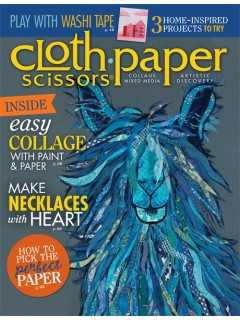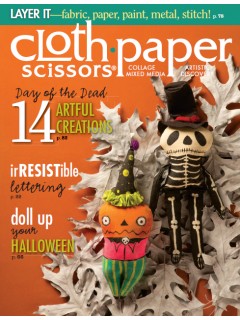As a reminder for those who weren't around then - my method is as follows:
Mixing the colours:
I used IDye for my disperse dyes (the link is for a Canadian store but I believe you can also get it at Dharma Trading, but any powdered dye that is meant for polyester fabric will do.
I mixed the powders to the following method:
a) 1 tsp for pale
b) 2 tsps for medium
c) 4 tsps for dark
d) 8 tsps for black
and then mixed the dye with a 1/2 cup of boiling water and two drops of synthrapol.
For a watercolour effect rather than the opaque result, you can thin this mixture with another 1/2 cup of water and once cool, paint your paper and let them dry as usual.
Painting the Paper
There's no secret or particular method to this process. The most important thing for me was the paper itself - I had the best results BY FAR using "good" or heavy weight paper from a sketchbook rather than bond (photocopy paper). I found the heat process bound the colour to the bond paper (that's what photocopy paper is for, after all!) whereas the colour just sat on top of sketchbook paper. However, you don't want to use a really, really good quality sketchbook paper as the colour will then sink into the texture of the paper rather than sit on top.
Once you have the right paper, make sure you have a place set up where your can lay your papers flat to dry as well as drip dry - one of my favourite papers was hung to dry and as a result has drips and globs of dye on it that translate really well when transferring.
As for the painting itself - the sky is the limit. I painted papers with one colour, multiple colours, in patterns, in solids, I did solid undercoats with finger painted swoops and curves over them, painted grid patterns, combed them, splatter them, "dropped" dye on the papers, smooshed the colour with my hands - or combinations thereof. Do whatever you want, let them dry and see what happens.
Fabric choice
The higher the amount of 'man made' material in the fabric, the better result you'll have. I had the very best result with 100 polyester silk which gives a really lovely glow to the fabric I also tried a sheer polyester tulle with a very dark value paper which produced a really lovely see through print.
Transferring the colour
Start by using a heavily padded surface on your table, and then putt a sheet of craft paper over it. Lay the fabric on that under surface "good" side up, put the painted paper(s) face down on the cloth, and then put another, bigger sheet of craft paper on top of it all to keep the iron clean. While you're working, keep the iron moving, keep the iron HOT HOT HOT(no matter what the fabric requirements are - you have two layers of paper between the fabric and the iron to protect it) and press down as hard as you can.
The longer you press and/or the more pressure you apply when you press, and the higher the heat, the more brilliant your result is. (For me, with arthritic hands, elbows and shoulders, pressure was problematic, so if I wanted brilliant colour, I just increased the time rather than the pressure.)
Further Advice
Try different things with your papers - using resists, cutting out shapes from your dried papers or tearing the papers into rough pieces and laying them out on your fabric as I did for the piece above. The key is to keep that iron moving and to do it as long as you can.
Don't worry if your first pieces are crap - my first ten were!! :) You really have to invest quite a lot of time and practice in this method of creating fabric to get a good result.
Okay! So, to produce my finished product this week, I used some of my already painted papers (they don't seem to have an efficacy expiry date, although they do have an end date in that you can only use them so many times before they have no more colour to transfer), cut them into angular shapes, used a fern as a resist under the cut up bits of paper, and ironed.
Here's the back with some of the (endless) quilting begun:
See you Wednesday with more of the process behind the process!









So you used a fern as a resist ... VERY interesting !!
ReplyDeleteBeautiful results! Have you tried doing this with Procion Dyes for Cottons? Or would those just absorb into the paper without releasing their colors? I hate thinking that I need to buy something new. ;) Thanks for sharing your process again.
ReplyDeleteHi Lisa, you're a no-reply blogger so I'm answering you here - the disperse dye technique only works with synthetic fibers - best results with polyester as mentioned in my post.
ReplyDeleteCheers,
Thanks Kit! I will keep my eye out for the synthetic dyes. One more great process to give a try!
ReplyDeleteI already like it and I've only seen the back.
ReplyDeleteGreat info Kit. Thank you! I love the idea of using a resist. The back of the piece looks great so far. Looking forward to seeing the front.
ReplyDelete